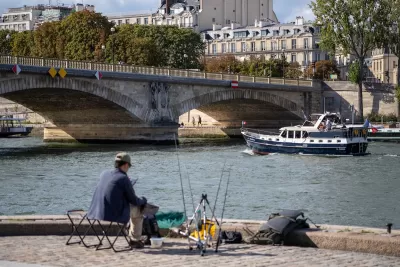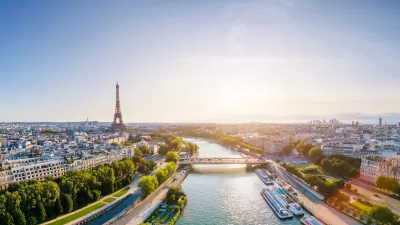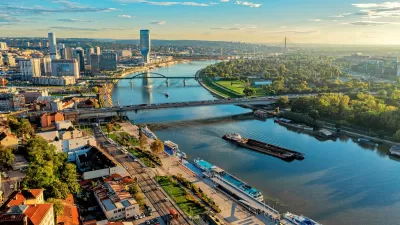Decades of restoration efforts are yielding positive results as dozens of species of fish return to the once-polluted waterway.

After years of being “biologically dead,” Paris’ River Seine is alive with fish and other marine life, reports Peter Yeung in Reasons to Be Cheerful.
In fact, in the 1970s there were only three fish species left in the 777-kilometer (482-mile) river, which spans northern France and cuts through the capital city. But after decades of urban water policies alongside community efforts, there are now nearly 40 that have been officially registered, with new species turning up all the time.
The city vastly improved its wastewater treatment system starting with its first strategic plan in 1929, leading to better water quality in the once-polluted river. The river was finally deemed safe for human swimming in 2024, just in time for the Summer Olympics. The city will also open three public swimming sites along the Seine in summer of this year.
“Yet recognition must also be given to the associations of fishermen in Paris, who, mostly on a voluntary basis, have been monitoring fish populations for years, as well as adopting sustainable practices such as banning fishing in reproductive seasons,” Yeung adds. However, challenges remain as new pollutants, climate change, and invasive species slow European cities’ progress in cleaning and protecting urban rivers like the Seine.
FULL STORY: Fish Are Thriving in the River Seine

Study: Maui’s Plan to Convert Vacation Rentals to Long-Term Housing Could Cause Nearly $1 Billion Economic Loss
The plan would reduce visitor accommodation by 25,% resulting in 1,900 jobs lost.

North Texas Transit Leaders Tout Benefits of TOD for Growing Region
At a summit focused on transit-oriented development, policymakers discussed how North Texas’ expanded light rail system can serve as a tool for economic growth.

Why Should We Subsidize Public Transportation?
Many public transit agencies face financial stress due to rising costs, declining fare revenue, and declining subsidies. Transit advocates must provide a strong business case for increasing public transit funding.

How to Make US Trains Faster
Changes to boarding platforms and a switch to electric trains could improve U.S. passenger rail service without the added cost of high-speed rail.

Columbia’s Revitalized ‘Loop’ Is a Hub for Local Entrepreneurs
A focus on small businesses is helping a commercial corridor in Columbia, Missouri thrive.

Invasive Insect Threatens Minnesota’s Ash Forests
The Emerald Ash Borer is a rapidly spreading invasive pest threatening Minnesota’s ash trees, and homeowners are encouraged to plant diverse replacement species, avoid moving ash firewood, and monitor for signs of infestation.
Urban Design for Planners 1: Software Tools
This six-course series explores essential urban design concepts using open source software and equips planners with the tools they need to participate fully in the urban design process.
Planning for Universal Design
Learn the tools for implementing Universal Design in planning regulations.
City of Santa Clarita
Ascent Environmental
Institute for Housing and Urban Development Studies (IHS)
City of Grandview
Harvard GSD Executive Education
Toledo-Lucas County Plan Commissions
Salt Lake City
NYU Wagner Graduate School of Public Service





























